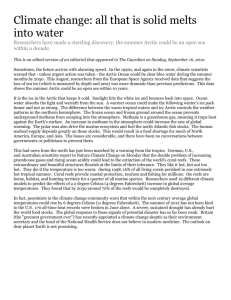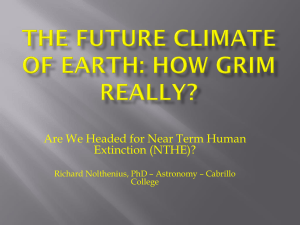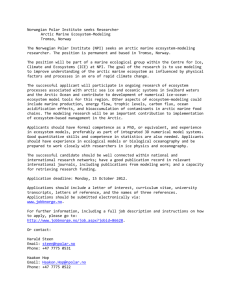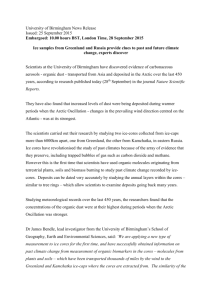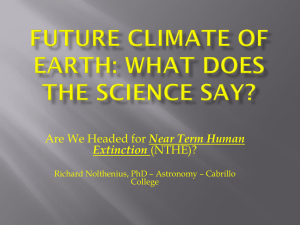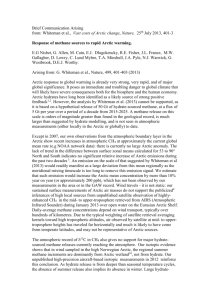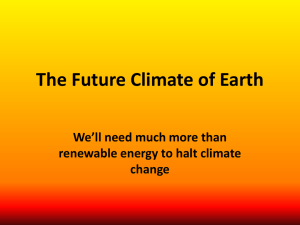Worsdale AMEG_pressr..
advertisement
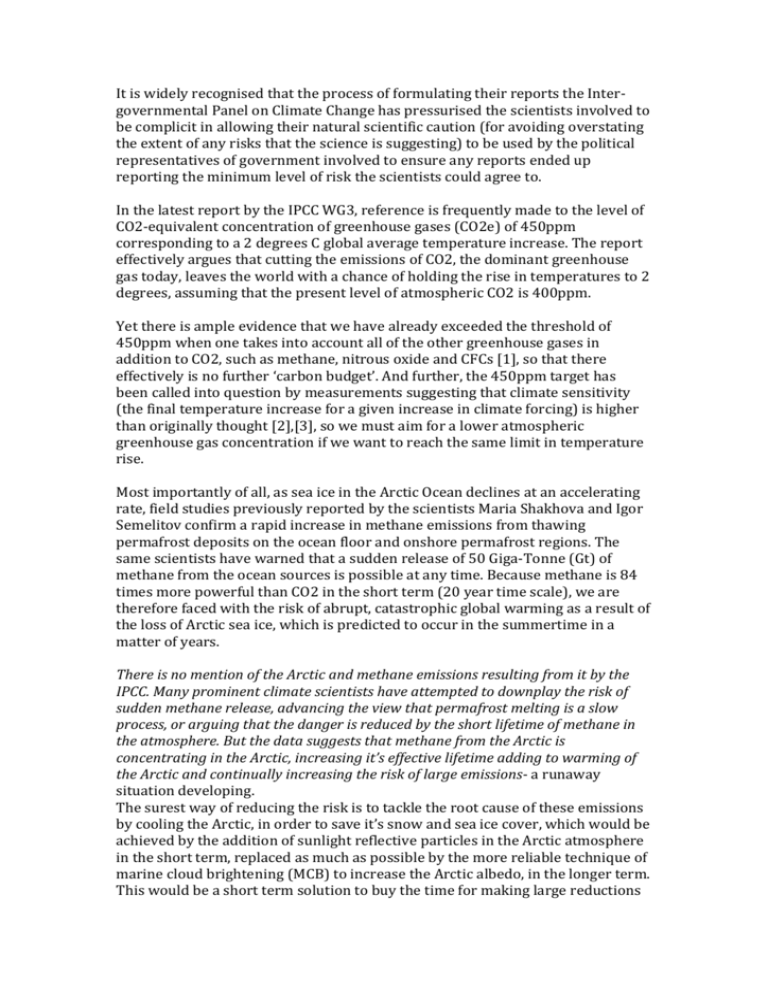
It is widely recognised that the process of formulating their reports the Intergovernmental Panel on Climate Change has pressurised the scientists involved to be complicit in allowing their natural scientific caution (for avoiding overstating the extent of any risks that the science is suggesting) to be used by the political representatives of government involved to ensure any reports ended up reporting the minimum level of risk the scientists could agree to. In the latest report by the IPCC WG3, reference is frequently made to the level of CO2-equivalent concentration of greenhouse gases (CO2e) of 450ppm corresponding to a 2 degrees C global average temperature increase. The report effectively argues that cutting the emissions of CO2, the dominant greenhouse gas today, leaves the world with a chance of holding the rise in temperatures to 2 degrees, assuming that the present level of atmospheric CO2 is 400ppm. Yet there is ample evidence that we have already exceeded the threshold of 450ppm when one takes into account all of the other greenhouse gases in addition to CO2, such as methane, nitrous oxide and CFCs [1], so that there effectively is no further ‘carbon budget’. And further, the 450ppm target has been called into question by measurements suggesting that climate sensitivity (the final temperature increase for a given increase in climate forcing) is higher than originally thought [2],[3], so we must aim for a lower atmospheric greenhouse gas concentration if we want to reach the same limit in temperature rise. Most importantly of all, as sea ice in the Arctic Ocean declines at an accelerating rate, field studies previously reported by the scientists Maria Shakhova and Igor Semelitov confirm a rapid increase in methane emissions from thawing permafrost deposits on the ocean floor and onshore permafrost regions. The same scientists have warned that a sudden release of 50 Giga-Tonne (Gt) of methane from the ocean sources is possible at any time. Because methane is 84 times more powerful than CO2 in the short term (20 year time scale), we are therefore faced with the risk of abrupt, catastrophic global warming as a result of the loss of Arctic sea ice, which is predicted to occur in the summertime in a matter of years. There is no mention of the Arctic and methane emissions resulting from it by the IPCC. Many prominent climate scientists have attempted to downplay the risk of sudden methane release, advancing the view that permafrost melting is a slow process, or arguing that the danger is reduced by the short lifetime of methane in the atmosphere. But the data suggests that methane from the Arctic is concentrating in the Arctic, increasing it’s effective lifetime adding to warming of the Arctic and continually increasing the risk of large emissions- a runaway situation developing. The surest way of reducing the risk is to tackle the root cause of these emissions by cooling the Arctic, in order to save it’s snow and sea ice cover, which would be achieved by the addition of sunlight reflective particles in the Arctic atmosphere in the short term, replaced as much as possible by the more reliable technique of marine cloud brightening (MCB) to increase the Arctic albedo, in the longer term. This would be a short term solution to buy the time for making large reductions in carbon emissions and drawing down CO2 from the atmosphere to halt global climate change. In summary, AMEG has undertaken serious investigations of the latest scientific observations and evidence and have come to the following extremely pertinent conclusions: 1. Observations and best models show that the sea ice is on an exponential downward trend (e.g. towards there being very little sea ice left at the end of summer 2016), demonstrating that the sea ice is already beyond the tipping point. 2. We are heading inexorably towards a complete and catastrophic meltdown of the Arctic ice cap, including the Greenland Ice Sheet and permafrost. 3. There appears to be no natural mechanism in the Earth System to stop this happening, therefore active intervention will be required to cool the Arctic and prevent further decline in the sea ice, melting of the Greenland Ice Sheet, and thawing of permafrost. 4. Permafrost is releasing vast quantities of the potent greenhouse gas, methane, at an exponentially growing rate, so suppression of this gas is needed. 5. Methane is 84 times more potent than CO2 over 20 years, whereas the carbon budget set by AR5 assumed a potency of around 20 times over 100 years. With this higher figure, we have already run out of carbon budget and are committed to a dangerous level of global warming this century, even if the Arctic is cooled quickly. 6. Ocean acidification is already affecting the marine food chain and there is extreme risk in allowing acidification to worsen for further decades. 7. Therefore there has to be active intervention to remove CO2 from the atmosphere (where we propose a combination of methods such as forest management, soil improvement with biochar, rock crushing with weathering, and aquaculture with diatoms). 8. Arctic cooling is relatively inexpensive; we need to ramp up public awareness towards a global agreement recognizing the great threat represented by losing the seaice and the need for governments to commit funding to save the situation, which is clearly in the interests of all of humanity. [1] http://oceans.mit.edu/featured-stories/5-questions-mits-ron-prinn-400ppm-threshold [2] http://www.apollo-gaia.org/CoR%20Keynote.pdf [3] http://m.rsta.royalsocietypublishing.org/content/371/2001/20120294.full

